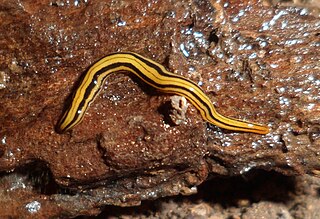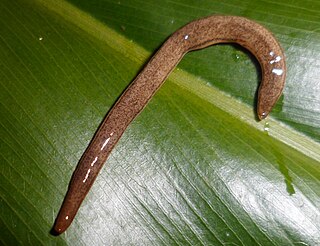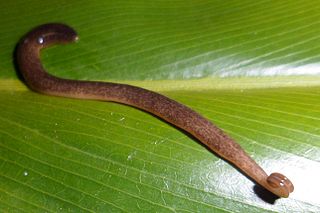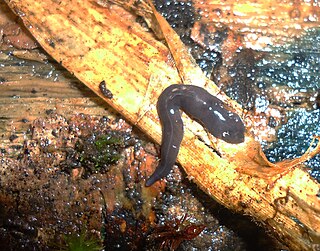
Geoplanidae is a family of flatworms known commonly as land planarians or land flatworms.

Girardia is a genus of freshwater planarians belonging to the family Dugesiidae.

Geoplaninae is a subfamily of land planarians endemic to the Neotropical region. Members of this family are sometimes referred to as the Neotropical land planarians. However, one species, Obama nungara has been introduced in Europe.

Luteostriata is a genus of land planarians from Brazil characterized by a yellow body with dark longitudinal stripes.

Obama is a genus of land planarians from South America. It contains several species adapted to human-disturbed environments, including the only invasive land planarian native to the Neotropical realm, Obama nungara, which has been accidentally introduced in Europe.

The reproductive system of planarians is broadly similar among different families, although the associated structures can vary in complexity.

Supramontana is a genus of land planarians from South America.

Choeradoplana is a genus of land planarians found in South America.

Paraba is a genus of land planarians from South America.

Imbira is a genus of land planarians found in South America.

Pasipha is a genus of land planarians from South America.

Notogynaphallia is a genus of land planarians from South America.

Endeavouria is a monotypic genus of land planarians from the Pacific region. It contains a single species, Endeavouria septemlineata.

Obama anthropophila is a species of Brazilian land planarian in the subfamily Geoplaninae. It is a very common land planarian in human-disturbed environments in southern and southeastern Brazil.

Obama nungara is a species of land planarian in the family Geoplanidae. It is native to South America, but has been introduced in Europe.

Imbira guaiana is a species of land planarian in the subfamily Geoplaninae. It is the type species of the genus Imbira and is found in Brazil.

Matuxia is a genus of land planarians from Brazil.
Cratera anamariae is a species of land planarian belonging to the subfamily Geoplaninae. It is known from specimens found in Serra dos Órgãos National Park, Brazil.

Geoplanini is a tribe of land planarians in the subfamily Geoplaninae.
Sarcoplanini is a tribe of land planarians in the subfamily Geoplaninae.

















